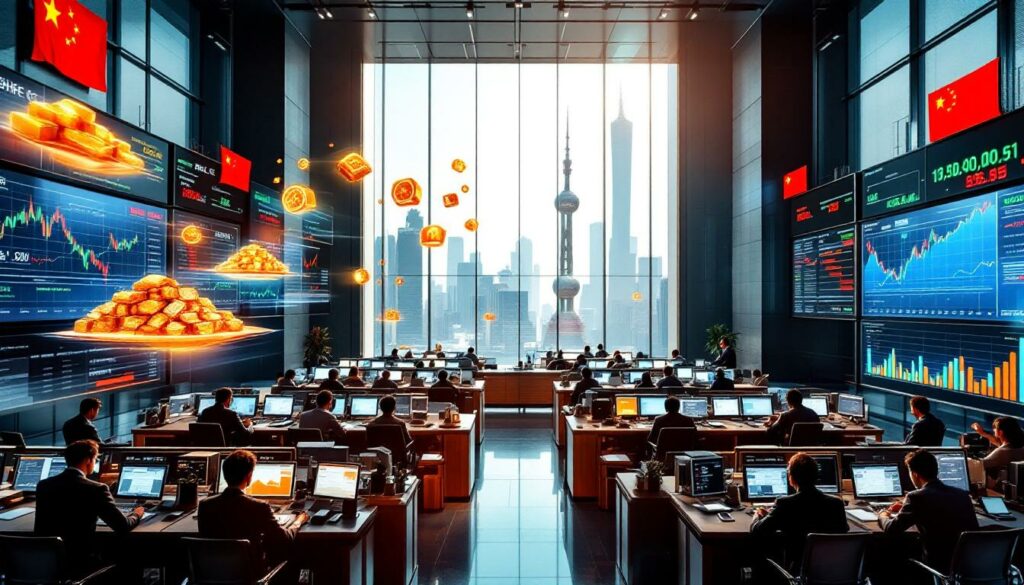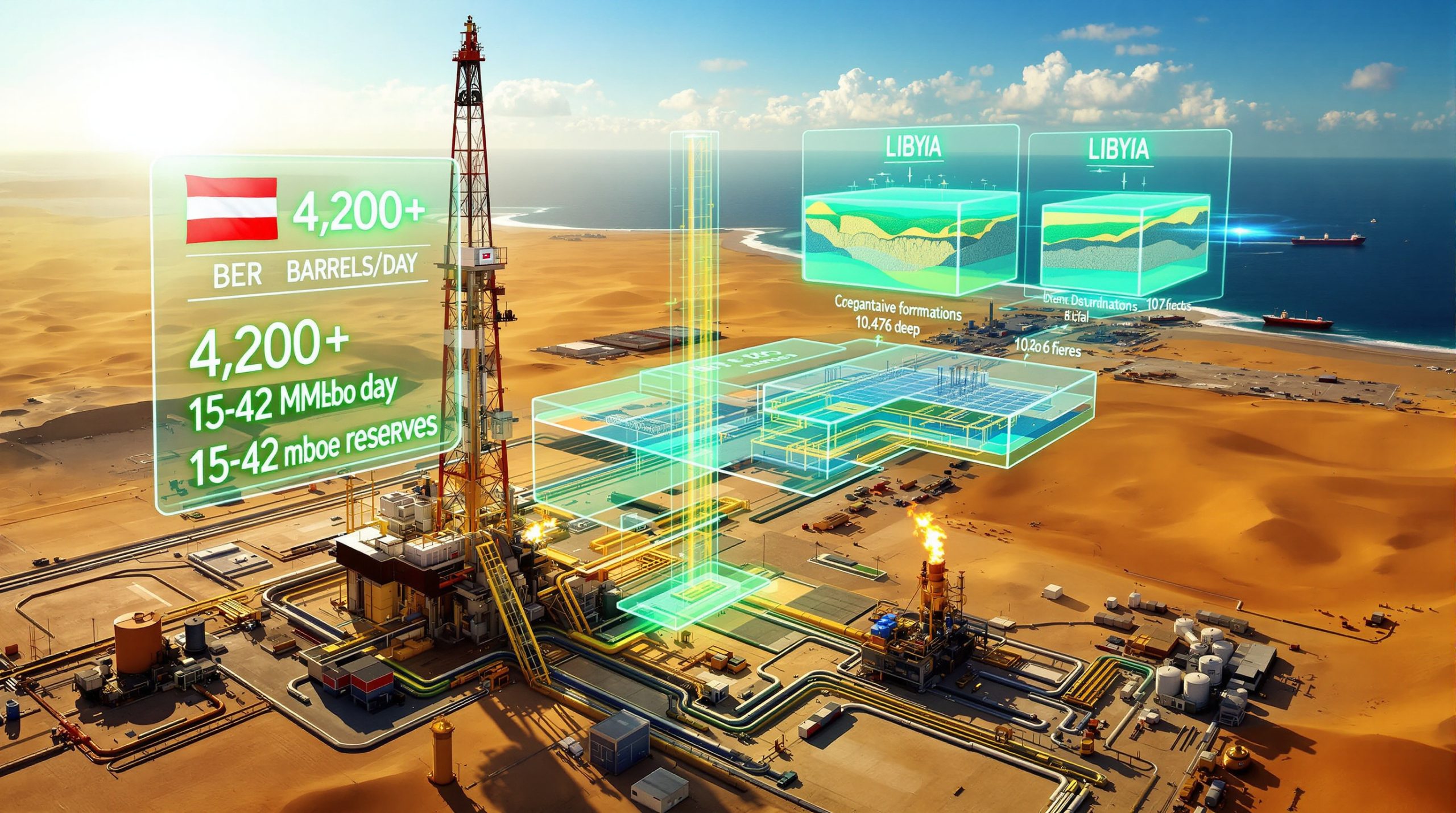Understanding SHFE and DCE Market Movements: A Comprehensive Analysis
The Shanghai Futures Exchange (SHFE) and Dalian Commodity Exchange (DCE) represent critical price discovery mechanisms within the global commodities ecosystem. These powerful Chinese exchanges not only reflect domestic industrial demand but increasingly influence global markets through their expanding trading volumes and international participation. This article examines the significance, operations, and impact of SHFE and DCE market movement on commodity trading worldwide.
What Are the SHFE and DCE Markets?
Understanding China's Major Commodity Exchanges
The Shanghai Futures Exchange (SHFE), established in 1999 through the merger of three commodity exchanges, has evolved into one of Asia's premier futures trading platforms. With trading volumes exceeding 2.4 billion contracts in 2024, SHFE has cemented its position as a global price-setting mechanism for metals including copper, aluminum, zinc, and more recently, energy and precious metals contracts.
The Dalian Commodity Exchange (DCE), founded in 1993, specializes in agricultural and industrial commodities, with particular dominance in iron ore price trends, soybeans, corn, and petrochemical futures. As China's agricultural futures pioneer, DCE processed over 1.3 billion contracts in 2024, making it the world's largest marketplace for agricultural derivatives.
Both exchanges operate under China Securities Regulatory Commission (CSRC) oversight and feature distinctive characteristics that differentiate them from Western counterparts:
- Investor structure: Dominated by retail participants (60-70%) versus institutional focus in Western markets
- Settlement mechanism: Physical delivery emphasis with stricter warehouse requirements
- Price limits: Daily 4-8% limits (varying by contract) versus less restrictive Western practices
- Trading hours: Segmented sessions with midday breaks versus continuous trading
"SHFE has emerged as the dominant price discovery mechanism for nickel futures globally, directly influencing LME price movements through arbitrage opportunities" – Min Zhu, IMF Working Paper, 2023
How These Markets Impact Global Commodity Prices
The influence of Chinese futures exchanges extends far beyond domestic markets. With China consuming approximately 50% of global base metals and being the largest importer of iron ore and soybeans, SHFE and DCE market movement creates immediate ripple effects across international markets.
Key points of global influence include:
- Cross-exchange arbitrage: Price differentials between SHFE copper and LME copper (averaging ¥1,200/ton discount in 2025) create arbitrage opportunities that harmonize global prices
- Physical delivery impact: SHFE's strict warehouse system influences physical premiums throughout Asia
- Policy signaling: Contract changes often telegraph upcoming Chinese industrial policy shifts
- Internationalization initiatives: Special access mechanisms through Free Trade Zones have increased foreign participation to approximately 15% on select contracts
Trading volumes on these exchanges now routinely surpass their Western counterparts for certain commodities. For example, SHFE aluminum contracts trade approximately 3.5 times the volume of LME aluminum, making Shanghai the de facto global price benchmark despite lower international participation rates.
How to Interpret SHFE and DCE Market Data?
Key Indicators in Metal Futures Trading
Interpreting SHFE and DCE data requires understanding several unique metrics and contract specifications that differ from Western exchanges:
Contract specifications:
- Standardized lot sizes (e.g., 5 tons for SHFE copper versus LME's 25 tons)
- Quoted in RMB per ton with physical delivery emphasis
- Exchange-approved warehouse system with strict quality requirements
- Tax considerations built into pricing (13% VAT on physical delivery)
Critical trading metrics:
- Open interest ratio: The relationship between open interest and trading volume (>0.5 indicates longer-term positioning)
- Warehouse warrant premiums: Certificates representing metal in specific warehouses that often trade at premiums/discounts
- Settlement price calculation: Volume-weighted average of last minute trading versus closing prices on Western exchanges
- Position concentration: Top 10 holders' percentage of open interest (reported daily)
DCE iron ore futures averaged daily volumes of approximately 500,000 contracts in Q1 2025, making it the world's most liquid iron ore derivative despite being a relatively young contract (launched 2013).
Technical Analysis Methods for Chinese Futures Markets
Technical analysis of SHFE and DCE requires adaptation to market-specific patterns:
- Price limit considerations: Daily limits create pattern distortions requiring "gap analysis" techniques
- Night session versus day session divergence: Often indicates foreign versus domestic sentiment shifts
- Calendar spread relationships: Front-month premiums/discounts to back months signal immediate supply concerns
- Seasonal patterns: Particularly pronounced in Chinese markets due to:
- Lunar New Year production slowdowns (15-20% volume reduction)
- "Golden Week" holiday effects on inventory builds
- Winter production restrictions for environmental reasons
- Fiscal year-end influences on state-owned enterprises
A distinctive characteristic of Chinese futures markets is the correlation between contracts. For example, SHFE copper and aluminum show a stronger positive correlation (R²=0.78) than on Western exchanges (R²=0.62) due to greater macro-driven trading by retail participants.
What Drives Price Movements on SHFE and DCE?
Macroeconomic Factors
Chinese futures markets demonstrate heightened sensitivity to domestic economic indicators compared to international benchmarks. Statistical analysis shows remarkable correlation between China's manufacturing PMI and SHFE copper futures (R²=0.82 from 2020-2025), significantly stronger than the correlation between U.S. ISM manufacturing and COMEX copper (R²=0.64).
Key macroeconomic drivers include:
- Industrial production data: Monthly figures directly impact metal futures, with a 1% change in industrial production typically moving copper futures 2-3%
- Credit metrics: Total social financing growth correlates strongly with construction-related futures
- Property market indicators: Housing starts and sales data significantly impact rebar, copper, and aluminum
- Monetary policy shifts: RRR cuts typically boost commodity futures 3-5% within two weeks
- Infrastructure spending announcements: Particularly impactful for DCE iron ore and SHFE steel futures
"Environmental compliance inspections cut aluminum output by approximately 8% in Q2 2025, creating a sustained price premium for SHFE aluminum versus international markets" – SMM Analyst, July 2025
Seasonal demand patterns in Chinese manufacturing create predictable price cycles, particularly:
- Pre-Lunar New Year inventory builds (December-January)
- Post-holiday restocking phase (March-April)
- Air conditioning season aluminum demand (May-July)
- Year-end construction completion push (September-November)
Supply-Side Influences
Supply factors often create sharp price movements on Chinese exchanges due to the country's dominant production position in many commodities:
Production disruptions:
- Environmental inspections (typically announced in March and October)
- Safety inspections following industrial incidents
- Power rationing during peak demand seasons
- Weather-related logistics disruptions
Inventory dynamics:
- Exchange warehouse stocks versus invisible inventories
- Bonded warehouse movements signaling import/export flows
- Strategic reserve releases (e.g., copper, aluminum, zinc)
Policy influence:
- Export quota adjustments (particularly impactful for rare earths)
- Import tariff changes affecting arbitrage opportunities
- Environmental regulations like the "Blue Sky" initiative of 2025
- Production capacity approvals/restrictions by region
SHFE and DCE warehouse inventories provide crucial signals about physical market tightness. For example, SHFE copper warehouse stocks declined 35% in H1 2025, indicating domestic supply shortfalls despite global surplus conditions.
How Do Base Metals Perform on SHFE?
Copper Market Analysis
SHFE copper serves as China's benchmark for the red metal, with contract specifications requiring 99.95% minimum purity and standardized 5-ton lots. Recent market developments include:
- Price trends: SHFE copper averaged ¥78,500/ton in Q2 2025, with front-month contracts trading at a persistent discount to LME prices
- Volume patterns: Daily trading volumes averaging 750,000 contracts, with night sessions accounting for 40% of activity
- Warehouse dynamics: Inventory drawdowns of 35% in H1 2025 despite global surplus conditions
- Spread relationships: Backwardation steepened to ¥1,200/ton between front and third month contracts
The SHFE-LME arbitrage window (accounting for VAT, freight, and financing costs) has been consistently open for imports during 2025, with the SHFE trading at an average ¥1,200/ton discount to LME prices after adjusting for these factors.
Major market participants include:
- State-owned enterprises (25-30% of positions)
- Domestic financial institutions (20-25%)
- Physical producers and consumers (30-35%)
- Foreign entities operating through qualified channels (15-20%)
Furthermore, copper price insights from leading analysts suggest continued volatility as the market adapts to changing global supply chains and energy transition demands.
Aluminum Market Dynamics
SHFE aluminum represents a unique market with China accounting for approximately 60% of global production. The market features:
Production cost structures in China:
- Energy costs (40% of production expenses)
- Alumina input (30%)
- Carbon anodes (15%)
- Labor and other costs (15%)
Regional production costs vary significantly, with Yunnan hydropower-based smelters operating at approximately ¥13,000/ton versus Shandong coal-powered facilities at ¥16,500/ton in 2025.
Inventory patterns:
- Seasonal builds during winter production peaks
- Geographical shifts from northern to southern warehouses
- Average inventory turnover of 45 days versus 65 days in Western markets
The SHFE aluminum premium/discount to international markets fluctuates based on domestic energy policies. The 2025 power consumption caps in key producing provinces created a sustained premium of 8-10% for SHFE aluminum versus LME.
Other Base Metals Performance
SHFE trades a comprehensive suite of base metals with varying market characteristics:
Zinc market:
- Concentrated production in Hunan, Yunnan, and Inner Mongolia
- Strong correlation with galvanized steel output (R²=0.76)
- Average premium of 5% to LME prices in 2025
- Seasonal smelter maintenance in Q2 typically creates price support
Lead market:
- Heavily influenced by battery manufacturing demand (65% of consumption)
- Recycling rates affect price sensitivity (secondary production provides 45% of supply)
- Typically trades at discount to international prices due to environmental compliance costs
Nickel market:
- Growing importance of battery-grade versus stainless steel demand
- Indonesian supply relationships create price volatility
- NPI (nickel pig iron) production shifts impact pricing spreads
- Premiums to LME frequently exceed 10% during shortage periods
Tin market:
- Smallest volume base metal contract on SHFE
- Higher volatility due to limited liquidity
- Strong correlation with electronics manufacturing PMI
- Premium to international prices averages 7-8%
Base metal contracts on SHFE demonstrate stronger intercommodity correlations than on Western exchanges, reflecting the predominance of macro-driven trading strategies among Chinese investors.
What Trends Are Emerging in DCE Ferrous Metals Trading?
Iron Ore Futures Analysis
DCE iron ore futures, introduced in 2013, have rapidly become the global benchmark for iron ore pricing despite the contract's relative youth. Current market dynamics include:
- Volume growth: Trading activity increased 15% year-over-year in H1 2025, averaging 500,000 contracts daily
- Price movements: Contracts have reflected China's slowing property sector with increased volatility
- Seaborne market influence: DCE settlements increasingly determine index-linked physical contracts globally
- Seasonal patterns: Distinctive price strength during March-April (post-winter construction resumption) and September-October (pre-winter build)
The correlation between DCE iron ore futures and Australian/Brazilian supply disruptions has strengthened in 2024-2025, with weather events in key export regions typically impacting DCE prices within 24-48 hours versus 3-5 days historically.
Price spreads between 58%, 62%, and 65% Fe grades have widened in 2025, reflecting China's environmental policy emphasis on higher-grade inputs for emissions reduction. Recent iron ore forecast insights suggest further volatility as Chinese policy adjustments continue to reshape demand patterns.
Coking Coal and Coke Market Dynamics
DCE coking coal and coke contracts provide critical insights into steelmaking raw material dynamics:
Price relationships:
- The coke-to-coal ratio (typically 1.3-1.5) serves as a profitability indicator for coke producers
- Spread trading between contracts offers insights into steel production margins
- Import arbitrage opportunities emerge during Mongolia border disruptions
Environmental impacts:
- The "Blue Sky" environmental policies of 2025 reduced coke production capacity by approximately 15%
- Seasonal production restrictions create predictable price cycles
- Sulfur content premiums have increased to ¥150-200/ton for low-sulfur materials
Demand patterns:
- Winter heating season restrictions (November-March) create distinctive inventory cycles
- Construction season restocking (March-April) typically drives 15-20% price increases
- Steel mill maintenance schedules impact short-term consumption
The domestic versus import price differential for coking coal has remained historically wide in 2025, with premium Australian coking coal trading at a 25-30% premium to equivalent domestic grades after accounting for import duties and transportation costs.
How Are New Energy Metals Performing?
Lithium-Related Contracts
SHFE introduced lithium carbonate futures in 2023, creating China's first exchange-traded benchmark for this critical battery material. Market development has been remarkable:
- Trading volume growth: Open interest increased approximately 200% since the 2023 launch
- Price volatility: Significantly higher than traditional base metals (30-day historical volatility averaging 35%)
- Physical market correlation: Strong alignment with spot prices (R²=0.88) despite the contract's youth
- EV production influence: Contract prices show 85-90% correlation with Chinese EV production forecasts
"Electric vehicle battery demand drives approximately 90% of lithium futures volatility, with grid storage applications beginning to emerge as a secondary price factor" – Ganfeng Lithium CFO, SMM Interview, June 2025
The lithium futures curve typically exhibits backwardation during supply shortages and contango during production expansion phases, providing valuable signals about market expectations for new production capacity efficiency.
Comparison with international lithium benchmarks shows SHFE prices typically lead Fastmarkets assessments by 1-2 weeks, reflecting China's dominant position in lithium processing and battery manufacturing. The current battery metals outlook indicates sustained growth in these emerging commodity markets.
Rare Earth Elements Market Analysis
China's rare earth futures contracts, traded on SHFE since 2020, provide price discovery for these strategically important materials:
- Trading volumes: Modest compared to base metals but growing at 30% annually
- Price trends: Increased volatility corresponding with export control announcements
- Supply constraints: Production quota adjustments directly impact futures curves
- Manufacturing relationship: Strong correlation with permanent magnet production data
The strategic importance of rare earths creates unique price dynamics:
- Policy announcements impact prices more significantly than physical supply-demand balances
- Export quota adjustments typically move futures 10-15% within days
- Processing capacity changes affect individual element spreads
- Illegal mining crackdowns create periodic price spikes
The relationship between heavy and light rare earth spreads provides insights into technology manufacturing trends, with neodymium-praseodymium (NdPr) prices increasingly diverging from other elements due to EV motor demand.
What Trading Strategies Work Best for SHFE and DCE Markets?
Arbitrage Opportunities
The unique characteristics of Chinese commodity exchanges create distinctive arbitrage strategies:
Cross-exchange arbitrage:
- SHFE-LME spreads for copper, aluminum, zinc, and nickel
- DCE-SGX iron ore differentials
- Dalian-CBOT soybean opportunities
These strategies showed a 68% success rate in 2024 when accounting for execution costs, currency risks, and financing expenses. The SHFE-LME copper arbitrage has been particularly profitable during 2025, with the average spread exceeding the theoretical fair value by ¥500-700/ton.
Calendar spread strategies:
- Seasonal patterns create predictable contango/backwardation shifts
- Chinese New Year effects on nearby contracts
- Construction season spreads for steel and base metals
- Power restriction impact on aluminum calendar spreads
Inter-commodity spreads:
- Copper/aluminum ratio trading (historical range: 3.2-4.1)
- Steel mill margin approximation (iron ore/rebar spreads)
- Coking coal/coke conversion ratio plays
Risk management considerations for arbitrage include:
- Currency exposure (CNH/USD movements)
- Delivery risk differentials between exchanges
- Margin requirement asymmetry
- Position limits and regulatory constraints
Monitoring the [global
Want to Catch the Next Major ASX Discovery?
Discovery Alert's proprietary Discovery IQ model provides real-time notifications of significant mineral discoveries on the ASX, helping investors capitalise before the wider market. Explore how historic discoveries have generated substantial returns by visiting the dedicated discoveries page and start your 30-day free trial today.




